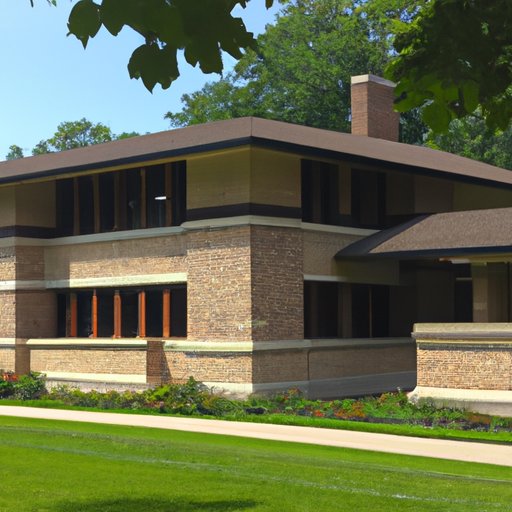Overview of Prairie Style Architecture
Prairie style architecture is an iconic form of American residential design that originated in the early 1900s. This type of architecture is characterized by simple, organic shapes and elements, as well as horizontal lines, low-pitched roofs, overhanging eaves, and open floor plans. It is often considered a precursor to modernist architecture, and has been highly influential in the development of other styles, such as Craftsman and Art Deco.

History and Origins of the Prairie Style
The prairie style was developed by a group of architects known as the Prairie School, which included Frank Lloyd Wright, Walter Burley Griffin, and William Drummond. The Prairie School was influenced by the Arts and Crafts movement, which emphasized simplicity and functionality in design, and sought to create a uniquely American style of architecture. The Prairie School was also heavily influenced by the natural landscapes of the Midwest, which inspired their use of horizontal lines and organic shapes in their designs.
The Prairie School was most active from 1900 to 1920, and during this time, they popularized the Prairie style in America and around the world. The style gained widespread recognition when Frank Lloyd Wright designed the Robie House in Chicago in 1909. The Robie House is considered to be one of the most important examples of Prairie style architecture, and it is often cited as a major influence on the development of modernist architecture.
Notable Features of Prairie Style Design
The most recognizable feature of Prairie style architecture is its emphasis on horizontal lines. This is achieved through the use of long, low-pitched roofs, wide overhanging eaves, and long, uninterrupted walls. These elements are intended to evoke a sense of openness and connection with the surrounding landscape.
In addition to horizontal lines, Prairie style homes also feature open floor plans. This allows for flexibility in the arrangement of living spaces, and creates a sense of flow throughout the house. Other notable features of the style include strong geometric forms, organic shapes, and the use of natural materials such as wood and stone.

Famous Architects Who Used the Prairie Style
Frank Lloyd Wright is widely considered to be the most influential figure in the development of the Prairie style. He was the first to apply the principles of the Arts and Crafts movement to residential design, and his designs were highly influential in the development of modernist architecture. Other notable architects who used the Prairie style include Walter Burley Griffin and William Drummond.

Examples of Prairie Style Homes Around the World
The Robie House in Chicago is perhaps the most famous example of Prairie style architecture. Designed by Frank Lloyd Wright in 1909, the house is now a National Historic Landmark and a UNESCO World Heritage Site. Other notable examples of the style include the Darwin D. Martin House in Buffalo, New York, and La Miniatura in Pasadena, California.
How to Incorporate Prairie Style Elements into Your Home
If you’re looking to incorporate some of the classic elements of the Prairie style into your home, there are several things you can do. First, select appropriate materials such as wood, stone, and brick to create a natural yet modern aesthetic. Second, use horizontal lines in your design, such as low-pitched roofs and wide overhanging eaves. Third, create an open floor plan that allows for flexibility in the arrangement of living spaces. Finally, incorporate organic shapes and natural elements into your design for a truly unique look.
Whether you’re building a new home or renovating an existing one, incorporating elements of the Prairie style can help you create a beautiful and timeless design. With its emphasis on simplicity and connection with nature, the Prairie style is an ideal choice for anyone looking to create a unique and inviting home.
(Note: Is this article not meeting your expectations? Do you have knowledge or insights to share? Unlock new opportunities and expand your reach by joining our authors team. Click Registration to join us and share your expertise with our readers.)
